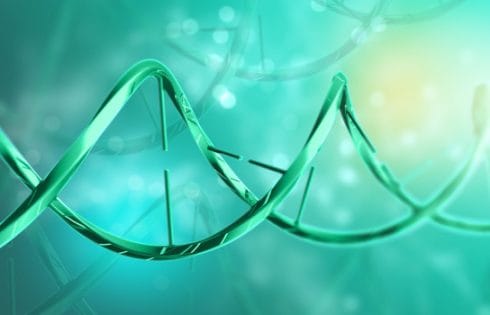
Scientists from the RNA Institute at the University of Albany (UAlbany) have developed new methods for designing and assembling DNA nanostructures that enhance their potential for use in various applications from medicine to materials science to data storage. Specifically, they can assemble these structures without the extreme heat and controlled cooling that is typically required.
They also showed that they could assemble these structures in several unconventional buffers including substances like nickel. Full details of the work are published in a new Science Advances paper titled, “Counter ions influence the isothermal self-assembly of DNA nanostructures.”
While DNA is most commonly recognized for its role in storing genetic information, it also works well for constructing nanoscale objects. Scientists can create precise structures as small as a few nanometers by programming DNA base pairs and engineering them into shapes with intricate architectures. These structures can be used to accurately place things like biomolecules, cells, and nanoparticles in the context of drug delivery and other use cases.
To create these structures, scientists usually have to heat and cool DNA strands in special buffer solutions that typically contain magnesium ions. This need for precise temperature control limits its use for practical applications in biomedicine for example. Also, DNA nanostructures assembled in magnesium can be unstable in biological environments.
The UAlbany team’s approach offers a way to assemble DNA nanostructures at moderate temperatures using metal ions other than magnesium. “We typically assemble DNA nanostructures by mixing the component DNA strands in a buffer solution, heating the solution to high temperatures, then cooling it down to lower temperatures,” explained Arun Richard Chandrasekaran, PhD, senior author on the study and a senior research scientist at the RNA Institute. With our approach, “DNA nanostructures can be assembled isothermally, that is, at constant moderate temperatures around 68°F or 98.6°F.”
Since their method does not require thermal cyclers or other heating equipment, “it simplifies the process of nanostructure synthesis and opens up the possibility of assembling these structures at constant temperatures,” he said.
Chandrasekaran and his colleagues have previously demonstrated the feasibility of using ions other than magnesium for nanostructure assembly including calcium, barium, sodium, potassium, and lithium at high temperatures. In the current study, they demonstrated that nickel and strontium could also be used with the important distinction that these ions work at moderate temperatures.
Being able to assemble DNA nanostructures at moderate temperatures will make it easier to construct DNA nanodevices for drug delivery and diagnostics using temperature-sensitive proteins like enzymes and antibodies. “Importantly, this work brings us closer to imagining how these nanostructures could actually be made and used in the human body for things like targeted drug delivery or precision diagnostics,” Chandrasekaran said. “While we still have a long way to go before this is possible, demonstrating DNA nanostructure assembly at body temperature is a promising step.”

